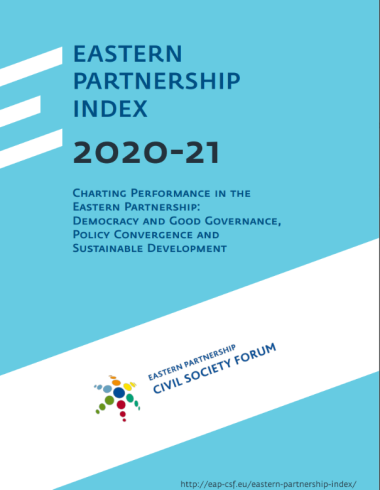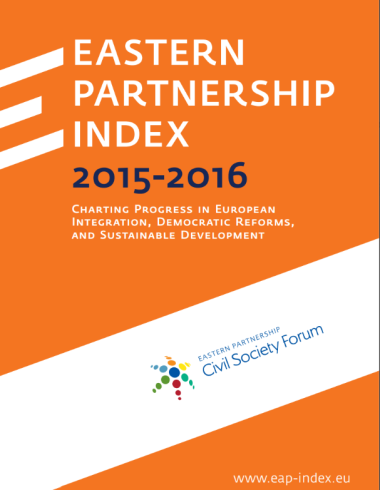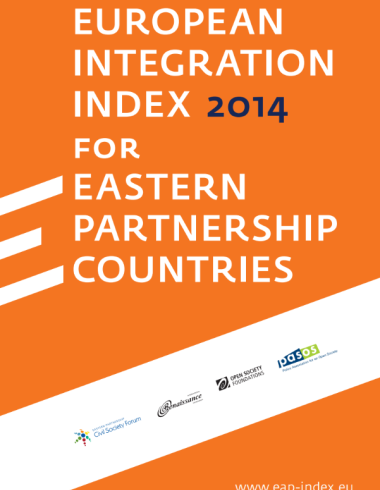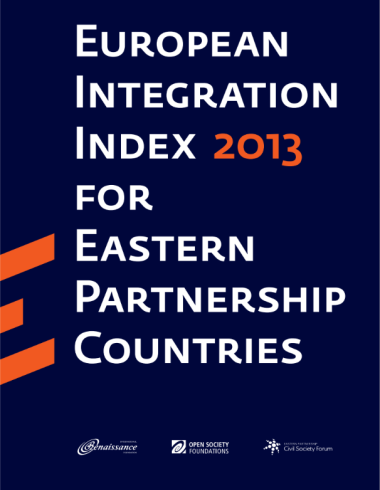Eastern Partnership Index
The Eastern Partnership Index is a data-driven tool that monitors how the six Eastern Partnership countries – Armenia, Azerbaijan, Belarus, Georgia, Moldova, and Ukraine – are advancing on their path towards sustainable democratic development and European integration.
Published every two years, the Index tracks both progress and setbacks across key areas of governance and policy. With over a decade of consistent analysis, it provides a long-term view of reform efforts, highlighting where change is happening, and where it is still needed.
The Index is structured around three core dimensions:

Democracy, good governance and the rule of law

Policy convergence with the European Union

Sustainable Development Goals
2025 EaP Index
To be cited as:
Eastern Partnership Civil Society Forum (2025)
Eastern Partnership Index 2025. Charting Performance in the Eastern Partnership: Democracy and Good Governance, Policy Convergence and Sustainable Development
Eastern Partnership Index, Eastern Partnership Civil Society Forum, Brussels.
Key findings from the 2025 edition

1. Geopolitical turbulence
The Eastern Partnership region faces a transformed geopolitical landscape marked by Russia’s war against Ukraine.
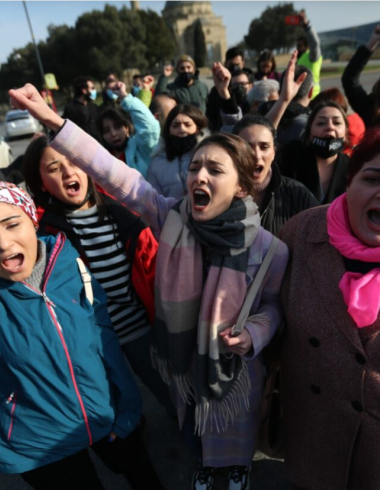
2. Importance of European integration
The EU enlargement agenda significantly influences the pace, political direction, and reform paths of countries like Moldova and Ukraine.

3. Tireless civil society
Civil society in the region robustly defends democratic values, exemplified by Georgia’s peaceful protests and active civic engagement despite harsh government repression and restrictive laws.

4. Ukraine advances amid war
Ukraine continues to improve its Index’ score and reform through societal resilience and coordinated government action.

5. Trade on the rise
Trade between the EaP countries and the EU is growing, driven by alignment with EU standards, though systemic challenges still hinder full integration and economic resilience.

6. Cautious optimism on environment
Some progress has been made on the environment, but in authoritarian countries like Azerbaijan and Belarus, this often hides a lack of real public involvement and government control.

7. Transport connectivity advances
Transport links and EU alignment have improved, boosting trade and travel, but some EaP countries still lack basic safety systems, and infrastructure compliance faces uncertainty due to regional security issues.

8. Overt authoritarianism
Once viewed as democratic backsliding, the Georgian Dream government is now exhibiting clear authoritarian tendencies, with significant declines in democracy, governance, and the rule of law.

9. Stratified region
The EaP region remains multi-speed. Moldova and Ukraine are advancing on their EU accession path; Georgia, despite its candidate status, intensified democratic backsliding; at the same time Armenia is articulating its European aspirations. Azerbaijan and Belarus consolidated authoritarianism.
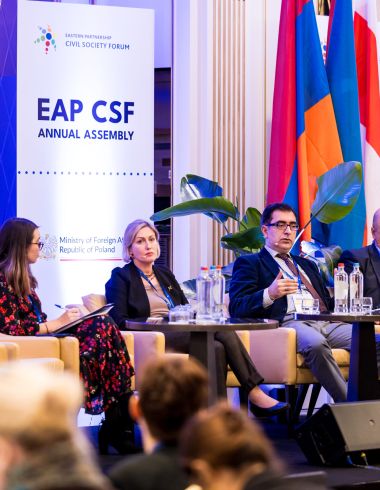
10. Disinformation problem
Fuelled by targeted Russian campaigns and worsened by U.S. funding cuts, disinformation threatens democracy and undermines public trust in institutions across the EaP region.

11. Public trust is lackluster
EaP Index dashboard
The EaP Index dynamic dashboard below allows you to explore, compare, and gain valuable insights into the progress and challenges faced by Eastern Partnership countries.
You can download a guide on how to use this dashboard below. You can also download the methodology and the 2025 Index dataset.
FAQ
The EaP Index looks at the progress of reforms in Armenia, Azerbaijan, Belarus, Georgia, the Republic of Moldova, Ukraine.
The Index is based on a composite methodology, with 3 interrelated dimensions categorised into 18 thematic areas and 76 sub-thematic areas. The Index takes cross-cutting issues into account throughout its analysis, with particular attention placed on gender equality and human rights.
The Index uses quantitative fact-based indicators gathered through an expert questionnaire comprising more than 879 questions and in-depth desk research, along with qualitative insights from expert thematic assessments and observations made by focus groups.
Data collection for the EaP Index involves two components: an expert questionnaire and desk research. The questionnaire is completed by over 60 independent civil society experts from the six EaP countries, with responses coded numerically (1 = yes, 0 = no, 0.5 = partially). Desk research complements this by collecting national data, reports, and international indexes to map new legislation, assess its quality, and inform the Sustainable Development Goals section. Scores ranging from 0.00 to 1.00 reflect either positive assessments or a lack of progress in the measured areas.
Following data collection, online Focus Groups are convened across the Index’s main thematic areas, with local experts from each of the six EaP countries, along with the EaP CSF Index team. These focus groups cross-check data for consistency, validate findings with local experts and coordinators, identify case studies, develop cross-country insights, and generate targeted recommendations. Additionally, preliminary results are compared with previous editions of the Index.
Each chapter of the Index is drafted by civil society experts (with a sectoral coordinator role) specialised in the thematic areas covered by the Index. Sectoral coordinators initiate the process by preparing the first draft based on the results of the expert questionnaire. Focus group discussions dedicated to each thematic area follow, leading to a refined second version of the draft. This draft is then editorially reviewed to ensure consistency and quality. As a final step, each report is peer reviewed by independent experts. The Index is then consolidated by the Executive Editor and the EaP CSF’s Advocacy and EaP Index Manager.
EaP Index experts are leading civil society figures in the EaP countries who share a rich thematic expertise in the thematic areas covered by the Index. In some EaP countries with repressive regimes, EaP Index experts are listed as anonymous. See the list of EaP Index experts for the 2025 edition.
This edition of the Index covers the period between July 2023 and December 2024, with some updates and references to several relevant events which happened after this period up until March 2025.
Yes, the dataset is available for further consultation at: https://eap-csf.eu/content/uploads/2025/06/EaP-Index-2025-dataset-for-distribution.xlsx.
Each edition of the Index poses limitations. We are aware of the following:
- Data availability and accuracy: Across the EaP region, national authorities do not necessarily collect and report data uniformly, leading to potential discrepancies and challenges in making accurate interpretations and comparisons.
- Challenges in securing independent civil society experts covering some sectoral topics: the Index relies on independent civil society experts from the six EaP countries; identifying such experts to cover some sectoral areas of the Index (namely those pertaining to “Policy Convergence with the EU”) proved to be challenging in relation to some EaP countries;
- Subjective metrics: the EaP Index relies on expert opinions and authentic insights from local experts and sectoral coordinators from the EaP region. This type of approach to social research may result in instances of unintended bias affecting the scores and rankings.
- Changing dynamics and timeliness: The Index faces challenges in keeping up with the rapidly changing (geo)political, economic, and social dynamics across the EaP countries and their evolving relations with the EU.
- Impact of active war on comparability: Comparing a country experiencing full-scale war, such as Ukraine, with other EaP countries presents inherent methodological and ethical challenges. War significantly disrupts institutional functioning, data collection, and policy implementation, potentially skewing performance indicators.
To address these limitations, we have:
- Improved data collection and validation: consistency, quality and reliability of data have been improved thanks to the use of an online data collection tool that replaced the former practices.
- Validation focus groups;
- The peer review process by 2 experts on the region served as a quality control mechanism enabling the identification and correction of potential errors, biases, and inaccuracies.
Check our Index Methodology or contact us at advocacy@eap-csf.eu .


